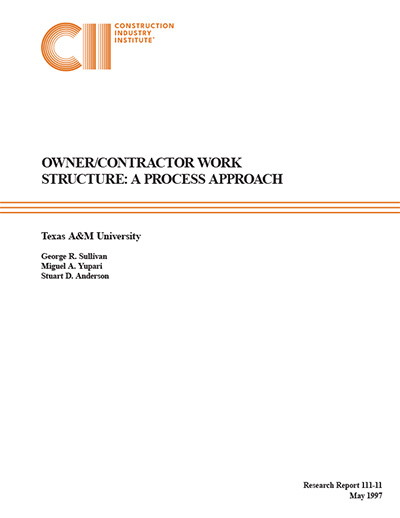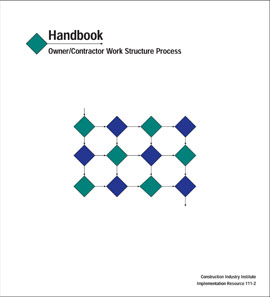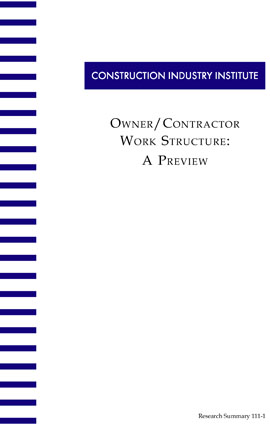
Owner/Contractor Work Structure: A Process Approach
The impact of organizational change on owner and contractor companies and on capital projects was a driving factor for this research. Data collected demonstrated that, in general, owners and contractors have reduced the number of personnel involved with project development and execution. Owners have also reduced the size of their capital programs. Central engineering organizations within owner companies are being reduced in favor of outsourcing. Skills have been reduced and/or eliminated by owners and skills have been added by contractors. Contractors find themselves performing more non-traditional services like front-end development and project financing.
In an environment of organizational change, owners need a work process to determine the most appropriate use, strategically, of their resources in work relationships with contractors to successfully develop and execute projects and achieve corporate and project objectives, recognizing less owner engineering resources. The purpose of this research was to create this owner/contractor work structure process.
The research was conducted under the direction of the Owner/Contractor Work Structure Research Team (#111). Four objectives of the research as determined by the research team were identified as follows:
- Determine real needs of owners and contractors in an environment of owner organizational change.
- Develop guidelines for owner rightsizing while maintaining skills with different organizational relationships with contractors.
- Develop a work structure process for owners and contractors to evaluate alternative work relationships in an environment of rightsizing.
- Develop products that meet the needs and expectations of owners.
These four objectives focused the research process.
Data were collected through mailed survey questionnaires and interviews. Based on analysis of these data, a work structure process framework was developed. A structured process modeling methodology was used. Decision flow charts were developed to describe details of the work process. Worksheets were developed to document decisions regarding competencies and sourcing of competencies.
Key conclusions drawn though the research process include:
- Downsizing is a fact, and it is driven by fixed-cost reduction mandates.
- Organizational relationships are changing.
- Impact of downsizing on project performance could not be quantified.
- Neither owners nor contractors can solve work structure problems by themselves.
- No formal process exists for determining owner/contractor work structures.
- There is a need for a formal process to determine owner/contractor work structures.
- The work process developed provides a structured methodology for organizational change.
- Competencies are key to work structure evaluations.
- Certain core competencies must be retained by the owner.
- Project Management Oversight is a core competency and is different than project management.
- The process is helpful but does not provide answers to all business organizational change.
- Metrics are not fully developed to measure impact of process.
Several key recommendations offered as a result of this research are as follows:
- Use the corporate work structure process first.
- Integrate the process into the project delivery process.
- Keep the process “evergreen.”
- Test the full process, document results, and improve the process.
- Develop functions and critical capabilities for each competency.
- Develop, test, and implement metrics.
- Test the use of the work process in different situations but adapt it accordingly and document results.
The research team encourages immediate implementation of the work structure process at both the project and corporate levels. The process provides a systematic approach to determine project competencies and the sourcing of them. It also provides a rationale for evaluating project skills and resources needed. The work process can lead to efficient operations by avoiding gaps and eliminating overlaps through alignment of work relationships. The process is flexible, easy to use, an instrument for rational organizational change, and can be a source for competitive advantage.



